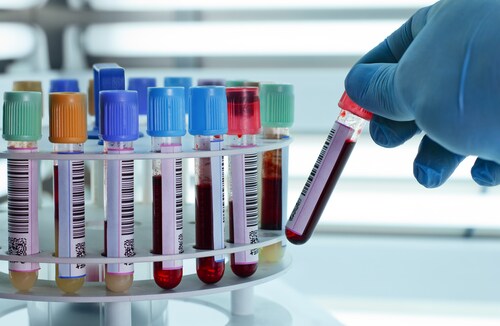 Immune responses can be evaluated using human peripheral blood mononuclear cells (PBMCs). PBMCs are made up of lymphocytes (B cells, T cells and NK cells), monocytes and dendritic cells. Density centrifugation (Ficoll-Paque) is the most typical method to isolate PBMCs. However, this methodology may result in basophils not being present in a PBMC culture, as well as contamination with other granulocytes and red blood cells. Grievink et al. (2016) evaluated and compared three PBMC isolation techniques: the Ficoll approach, isolation by cell preparation tubes (CPTs) and isolation by SepMate tubes with freshly collected blood.1 They described cell recovery, viability and functionality to assist researchers in selecting the most appropriate method of PBMC isolation for their specific downstream applications.
Immune responses can be evaluated using human peripheral blood mononuclear cells (PBMCs). PBMCs are made up of lymphocytes (B cells, T cells and NK cells), monocytes and dendritic cells. Density centrifugation (Ficoll-Paque) is the most typical method to isolate PBMCs. However, this methodology may result in basophils not being present in a PBMC culture, as well as contamination with other granulocytes and red blood cells. Grievink et al. (2016) evaluated and compared three PBMC isolation techniques: the Ficoll approach, isolation by cell preparation tubes (CPTs) and isolation by SepMate tubes with freshly collected blood.1 They described cell recovery, viability and functionality to assist researchers in selecting the most appropriate method of PBMC isolation for their specific downstream applications.
The investigators collected venous blood from three volunteers into sodium-heparin tubes or CPTs containing sodium heparin. They performed each of the three different separation techniques within one hour of collection. The Ficoll approach resulted in the lowest cell recovery with an average of 6 x 105 cells/ml of whole blood. The SepMate tubes and CPTs resulted in cell recovery of 8 x 105 cells/ml and 13 x 105 cells/ml of whole blood, respectively. Assessing for PBMC fractions, the Ficoll approach again produced the lowest cell recovery. However, when investigating cell viability using trypan blue exclusion, all three techniques demonstrated 100% viability.
Microscopic examination showed that there was higher erythrocyte contamination for CPT-isolated populations compared to Ficoll- and SepMate-isolated populations. The researchers then used flow cytometry to assess the composition of the isolated PBMC populations, monocytes (CD14), T cells (CD3), B cells (CD20) and NK cells (CD56). Although they found variation between the three subjects, there were only minor differences between isolation techniques.
Finally, the investigators quantified the response of PBMCs to a super antigen stimulation by their release of IFNγ, IL-1β, IL-6, IL-8 and TNFα. Ficoll-isolated PBMCs secreted lower levels of IFNγ than those prepared from CPT- or SepMate-isolated PBMCs. Furthermore, IL-1β, IL-6, IL-8 and TNFα release was lower for Ficoll-isolated PBMCs compared to CPT- and SepMate-isolated PBMCs.
Grievink et al. suggest that PBMC isolation by CPTs and SepMate tubes is straightforward and requires limited sample handling compared to Ficoll isolation, which they found was more laborious but more cost-effective. Overall, SepMate and CPT result in a higher recovery than Ficoll isolation. For CPT-isolated populations, there is significantly greater erythrocyte contamination.
Reference
Grievink, H.W., et al. (2016) “Comparison of three isolation techniques for human peripheral blood mononuclear cells: Cell recovery and viability, population composition, and cell functionality,” Biopreservation and Biobanking [Epub ahead of print].
Leave a Reply